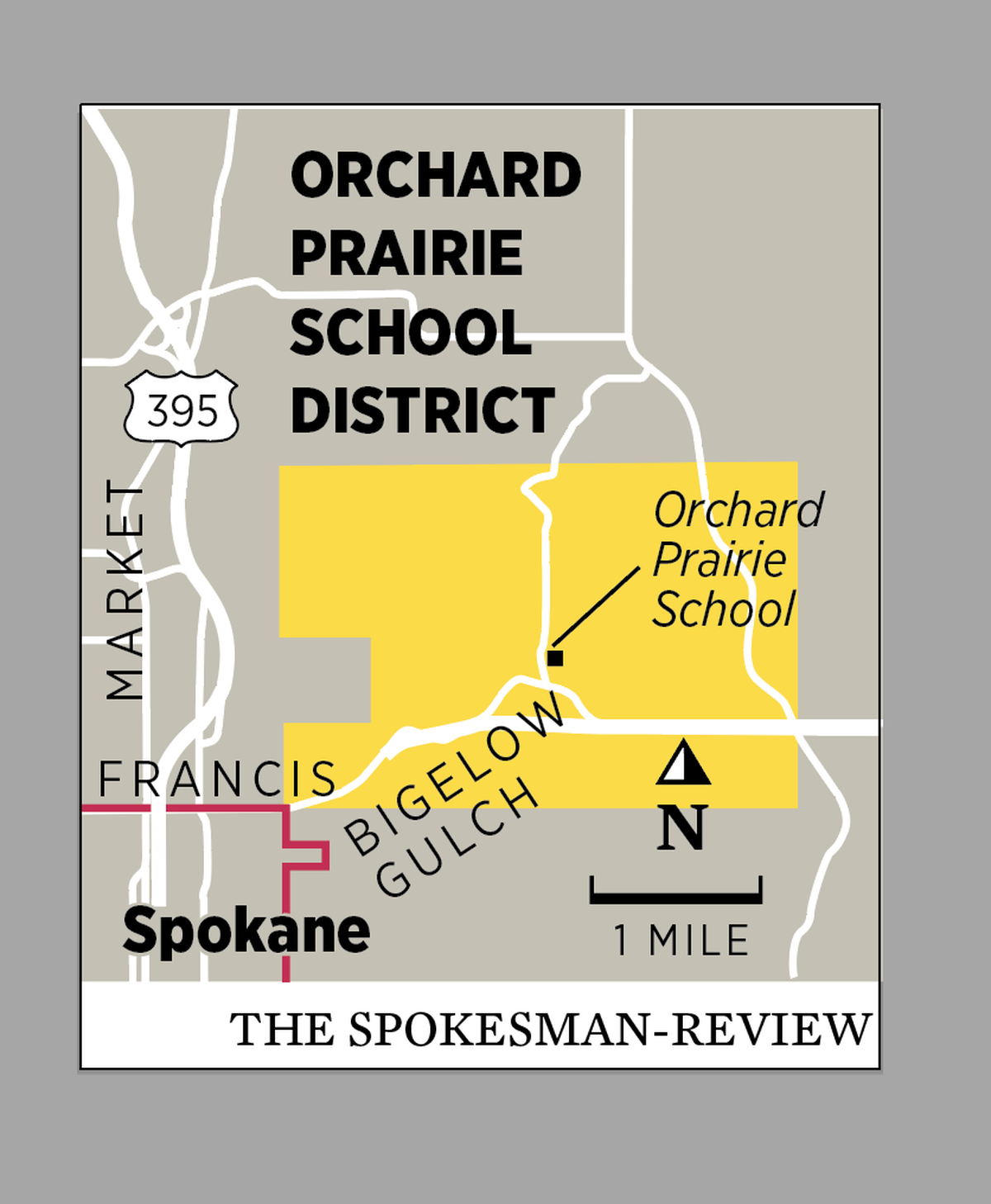Cheney schools tax proposal too close to call, but bonds in Deer Park and Orchard Prairie fail
A physical education class takes place in September at Arcadia Elementary in Deer Park while students file in for lunch. The gymnasium is divided by a modular wall to make room for a cafeteria-style space in the school, which is dealing with an explosion in student population. (Jesse Tinsley/The Spokesman-Review)
Election night results indicate a near countywide failure for school bonds meant to modernize or expand campuses in November, with one exception.
Results of Cheney Public Schools’ bond were too close to call on election night. The measure earned a 59.2% “yes” vote. Bonds require 60% to pass, and poll workers will continue to tabulate remaining ballots in the coming days.
Bonds from Deer Park and Orchard Prairie school districts’ proposals were faring poorly. Deer Park’s bond had at 51.4% support, and Orchard Prairie earned 53.7% support.
It’s a familiar feeling for school districts.
In February, all five school districts seeking bonds to pay for major construction projects failed to garner supermajority support, sending waves through school communities facing overcrowding, dilapidated facilities and outdated infrastructure.
Three of the five opted to try again during the general election: Cheney and Deer Park sending bonds, and West Valley a capital levy.
After regrouping, Deer Park sent a bond $7 million cheaper to ballots with a shorter project list than the February bond that failed at 49.5%.
Cheney put forth the same ballot measure as the February attempt that failed at the time at 54.5%. West Valley had a $92 million bond on February ballots tha 50.8% of voters supported; the Valley district opted to send a levy rather than a bond to ballots this time around.
Here’s what each district hoped to fund with bonds in their communities.
Cheney Public Schools
The largest by geography in the county, Cheney Public Schools sent to voters a $72 million bond to address a laundry list of projects in the district encompassing Cheney, the West Plains and Airway Heights.
The district serves 5,700 students and is expecting to grow significantly in enrollment as Airway Heights’ population increases.
The district’s plans include construction of a new elementary school in Airway Heights to brace for the expected population boom, as well as buying plots of land for a future secondary school, elementary school and transportation site so the district has room to grow with projected enrollment increases.
Schools around the district were also slated for several improvements, like kitchen and bus loop upgrades at Salnave and Windsor Elementary, and stadium renovations at Cheney High School.
Superintendent Ben Ferney was feeling optimistic and grateful Tuesday night at a watch party with school staff and volunteers, waiting to see if they could pay for such projects in their district.
But they’ll have to keep waiting.
“We got hope, we got a chance,” Ferney said. “We’re not there yet, but we got a chance.”
So far, they’re faring around 5 points better than their February attempt with the exact same amount and projects.
Ferney credits this improvement to partnerships with Airway Heights municipalities and a better effort to market their bond this time around.
“It’s gonna be a nailbiter, but I’m just really proud of the work; it was a community-based effort,” Ferney said.
Deer Park School District
The growing district sought a $55.1 million bond to fund construction of a new elementary school and transportation facility in the near-2,800-student district.
School officials sought the bond to pay for the construction of an additional elementary school to ease overcrowding at Deer Park schools and brace for impending growth evident by a ballooning population showing no signs of slowing.
They also intended to replace their 100-year-old bus barn that doesn’t have internet and is accessed via a pothole-laden dirt road.
Orchard Prairie School District
The teeny school district of Orchard Prairie put forth a $6.2 million bond to the some-500 voters in their 6-square-mile district.
Staff hoped to replace one of the two schools on their campus: razing the out-of-date 1970s-era school that houses older students while adding their 1894 school to the historic registry.
Younger students still learn in the 1894 building, the oldest operating schoolhouse in the state.
School staff and officials were concerned in October that if they couldn’t pass a bond to pay for construction, their current facilities wouldn’t be up to par with state standards, prompting the 78 students enrolled there to be absorbed by other school districts.



